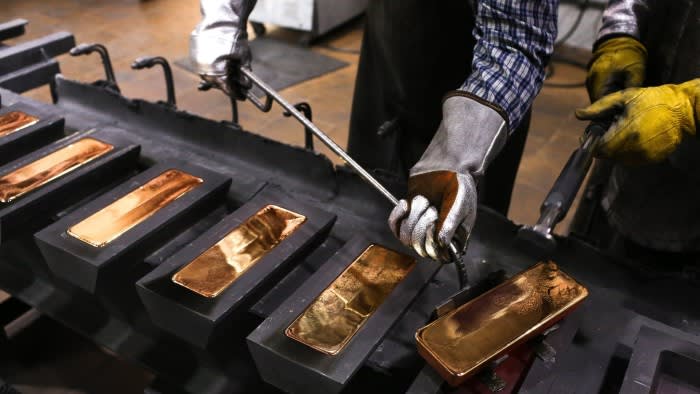Unlock the Editor’s Digest for free
Roula Khalaf, Editor of the FT, selects her favourite stories in this weekly newsletter.
Investors’ “fear of missing out” on gold’s rally has sparked record demand for the precious metal, even as high prices push central banks to scale back their purchases.
The value of global demand passed $100bn for the first time in the third quarter of this year, according to industry body the World Gold Council, driven mainly by investor buying.
The volume of global gold demand also rose to a record in the same period, up 5 per cent to 1,313 tonnes.
The rush has helped drive the price of the yellow metal up 34 per cent this year and pushed it to a series of record highs, amid concerns about conflict in the Middle East and Ukraine, and as central banks diversify away from the US dollar and western economies start cutting interest rates. Gold prices hit a new high on Wednesday of $2,788 a troy ounce.
“Professional and institutional investors seemed to suffer a case of Fomo — fear of missing out — as gold’s performance repeatedly hit the headlines,” the WGC said in its quarterly report.
This “Fomo” has meant that falls in the price of gold have been shorter and shallower than normal as investors pounce on softer prices.
“There’s lots and lots of people looking to buy gold on a dip,” said John Reade, market strategist at the WGC. “A lot of people like gold, they wanted to be in gold, but they didn’t have it [in their portfolio] in the first half of the year, for whatever reason.”
Total demand for investments, such as bars, coins or backing for exchange traded funds, more than doubled to reach 364mn tonnes in the third quarter, according to the report. Inflows into gold-backed ETFs hit 94 tonnes, a reversal after nine successive quarters of outflows.
Family offices and wealthy individuals have been buying more gold in recent months due to concerns about government debt levels, particularly in the US, according to Reade.
“Family offices tend to think in longer time horizons than retail investors. They think of generational wealth protection, the grandchildren — and they have become really concerned about debt levels, particularly in the US,” he said.
However, central banks slowed their gold purchases during late summer, with buying falling 49 per cent year-on-year to 186 tonnes, the lowest quarterly level in two years. The sharp increase in gold prices since March had inhibited buying by central banks, the WGC said.
As western governments cut interest rates, this is expected to continue to support gold prices. A non-yielding asset, gold typically benefits from lower rates because the opportunity cost of holding it is lower.
Jewellery demand has been dented by high gold prices, with global consumption falling 7 per cent in the quarter compared with the previous year, according to the WGC. Jewellery represents about 40 per cent of global gold demand.
“The absolute price level is quite mind-boggling to someone who’s been following gold for a long time,” said Reade. “Jewellery demand is being impacted.”
https://www.ft.com/content/dd0e24a4-b694-40ca-881e-d9423f2a8541


